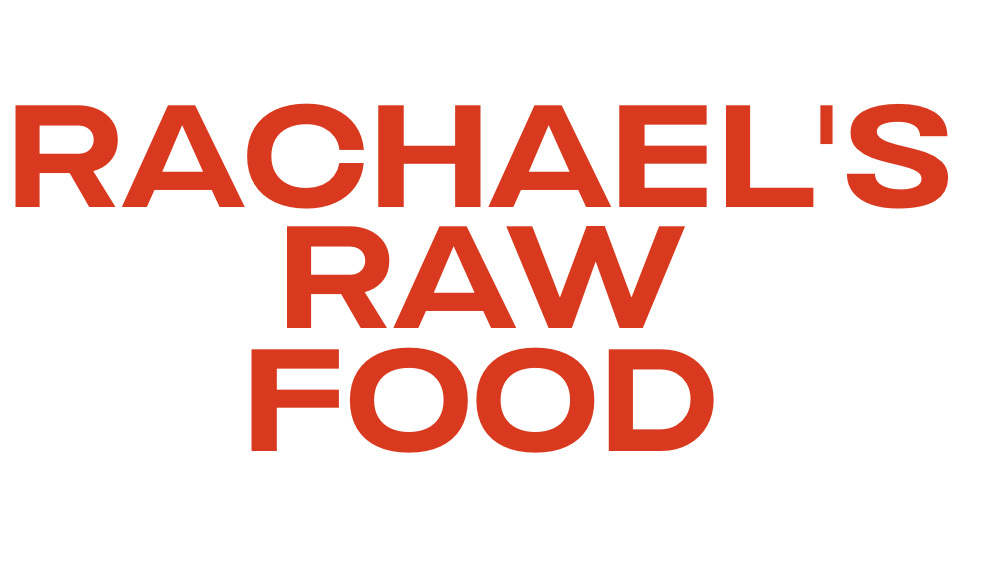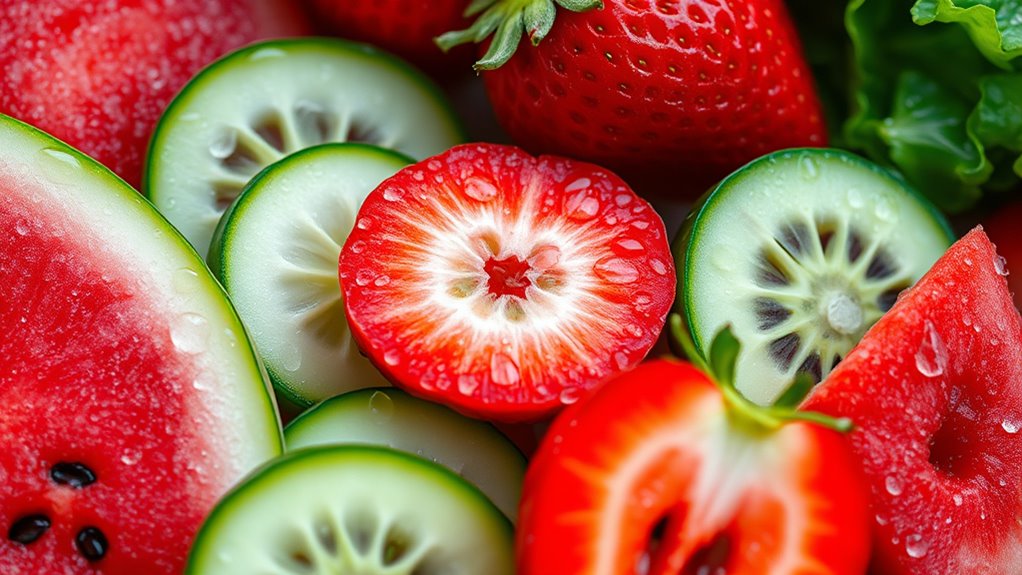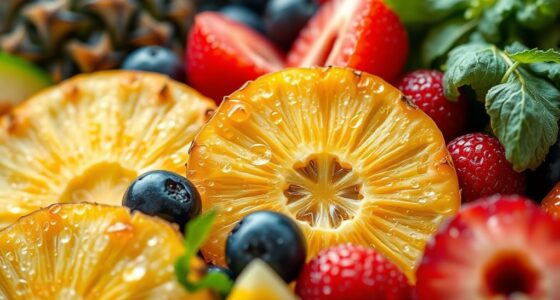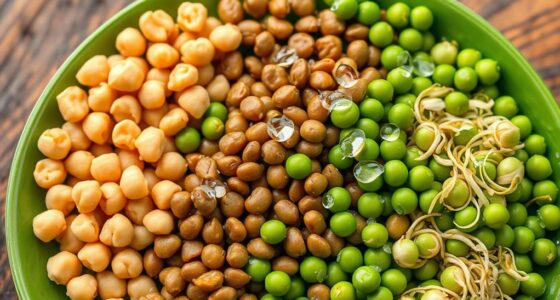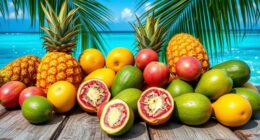Eating raw fruits and vegetables helps keep you hydrated by providing natural water and essential electrolytes like potassium and sodium. Water-rich options like watermelon, oranges, cucumbers, and celery deliver hydration directly while supporting your body’s electrolyte balance. These foods also supply antioxidants and nutrients that boost overall health. Incorporating more of these into your diet can enhance hydration effortlessly. Keep exploring to discover more ways that these nutritious foods support your body’s water and electrolyte needs.
Key Takeaways
- Raw fruits and vegetables have high water content that directly contributes to hydration.
- They supply natural electrolytes like potassium and sodium, enhancing fluid retention and balance.
- Consuming water-rich produce helps quench thirst and supplement hydration beyond drinking water.
- These foods provide essential nutrients and antioxidants that support overall bodily functions and reduce inflammation.
- Incorporating raw produce into meals boosts hydration efficiency while delivering vital vitamins and minerals.
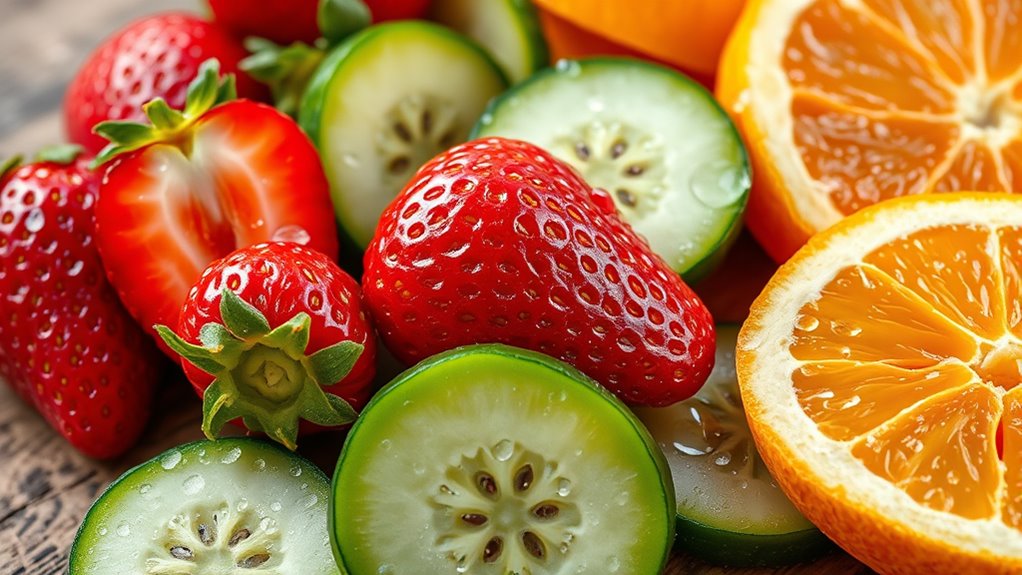
While drinking water is the most obvious way to stay hydrated, many foods also play a essential role in maintaining your fluid levels. Raw fruits and vegetables are especially effective because they contain high water content, which directly contributes to your overall hydration. When you include these foods in your diet, you’re not just quenching your thirst — you’re supporting your body’s ability to keep its electrolyte balance stable. Electrolytes, such as potassium and sodium, are vital for proper hydration efficiency, and many fresh produce items are rich sources of these minerals.
Raw fruits and vegetables boost hydration by providing water and essential electrolytes naturally.
For example, watermelon is over 90% water and provides a substantial dose of electrolytes like potassium. Eating a few slices can quickly boost your hydration levels while also replenishing electrolytes lost through sweating or activity. Similarly, cucumbers are composed mostly of water and contain small amounts of magnesium and potassium, which help maintain electrolyte balance. Incorporating these foods into your meals can be an effortless way to stay hydrated throughout the day, especially when you’re active or exposed to heat.
Other raw vegetables, like celery and bell peppers, serve as excellent hydration allies. Celery’s high water content, combined with its natural sodium, makes it particularly effective at supporting hydration efficiency. Sodium is essential for retaining water and maintaining fluid balance, so consuming foods with natural electrolytes helps your body absorb and utilize water more effectively. Bell peppers, especially red and yellow varieties, offer a good amount of water along with potassium, further supporting electrolyte stability and hydration.
Fruits such as strawberries, oranges, and pineapples also contribute considerably to your water intake. Oranges, with their natural citrus flavor and high water content, are loaded with vitamin C and potassium, making them a tasty way to promote hydration and electrolyte balance. Strawberries and pineapples, besides being juicy, provide antioxidants that can help reduce inflammation and support overall health, indirectly benefiting your hydration status.
Additionally, proper hydration is essential for maintaining overall health and optimal bodily functions. Incorporating a variety of these raw fruits and vegetables into your diet enhances hydration efficiency because they not only supply water but also deliver essential electrolytes. This combination ensures your body maintains proper fluid balance and functions at its best. By prioritizing these water-rich foods, you give your body a natural, nutrient-packed boost that works alongside drinking water, helping you stay hydrated more effectively and comfortably throughout the day.
Frequently Asked Questions
Which Raw Fruits and Vegetables Have the Highest Water Content?
If you’re looking for raw fruits and vegetables with the highest water content, juicy melons like watermelon and cantaloupe top the list, keeping you well-hydrated. Crisp greens such as lettuce and celery also contain lots of water, making them perfect for hydration. Incorporate these into your meals and snacks to stay refreshed. You’ll enjoy their natural juiciness while supporting your hydration needs effortlessly.
How Does Cooking Affect the Hydration Properties of Fruits and Vegetables?
Think of cooking as a gentle rain washing over your produce, transforming its hydration. Different cooking methods, like steaming or boiling, can cause water loss and reduce nutrient retention. You might find that cooked fruits and veggies are less hydrating than raw ones because heat causes water to evaporate and nutrients to break down. To preserve hydration, opt for quick, gentle methods that keep the water content intact.
Can Eating Raw Produce Replace Drinking Water Entirely?
You might think eating raw produce can replace drinking water, but that’s a hydration myth. While raw fruits and veggies contribute to your fluid intake, they don’t provide enough to keep you fully hydrated, especially during hot weather or intense activity. Nutrient interactions in food affect hydration, but they can’t substitute the essential role of drinking water. Rely on both food and fluids for ideal hydration and health.
Are There Specific Fruits or Veggies Recommended for Hydration During Exercise?
Did you know that watermelon is over 90% water? During exercise, choose fruits like watermelon, oranges, or strawberries, which help maintain electrolyte balance and support hydration timing. These fruits not only hydrate but also replenish essential minerals lost through sweat. Incorporate them into your post-workout snack to stay refreshed and energized. Their high water content makes them ideal for quick hydration, especially when you need a natural boost.
How Do Storage and Ripeness Impact the Water Content in Produce?
You should know that produce storage and ripeness effects considerably impact water content. When you store fruits and veggies properly, like keeping them in cool, airtight conditions, they retain more moisture. Ripeness affects water levels too—ripe produce usually has higher water content than underripe ones. So, for maximum hydration, choose ripe produce and store it correctly to preserve its juicy, hydrating qualities.
Conclusion
By choosing raw fruits and veggies, you’re giving your body a invigorating splash of hydration, like a cool breeze on a hot day. These water-rich foods are your secret allies, turning your plate into a mini oasis of moisture. So next time you’re feeling parched, remember that nature’s own hydration station is right in your kitchen. Embrace these crunchy, juicy treasures and let them keep you revitalized and energized all day long.
